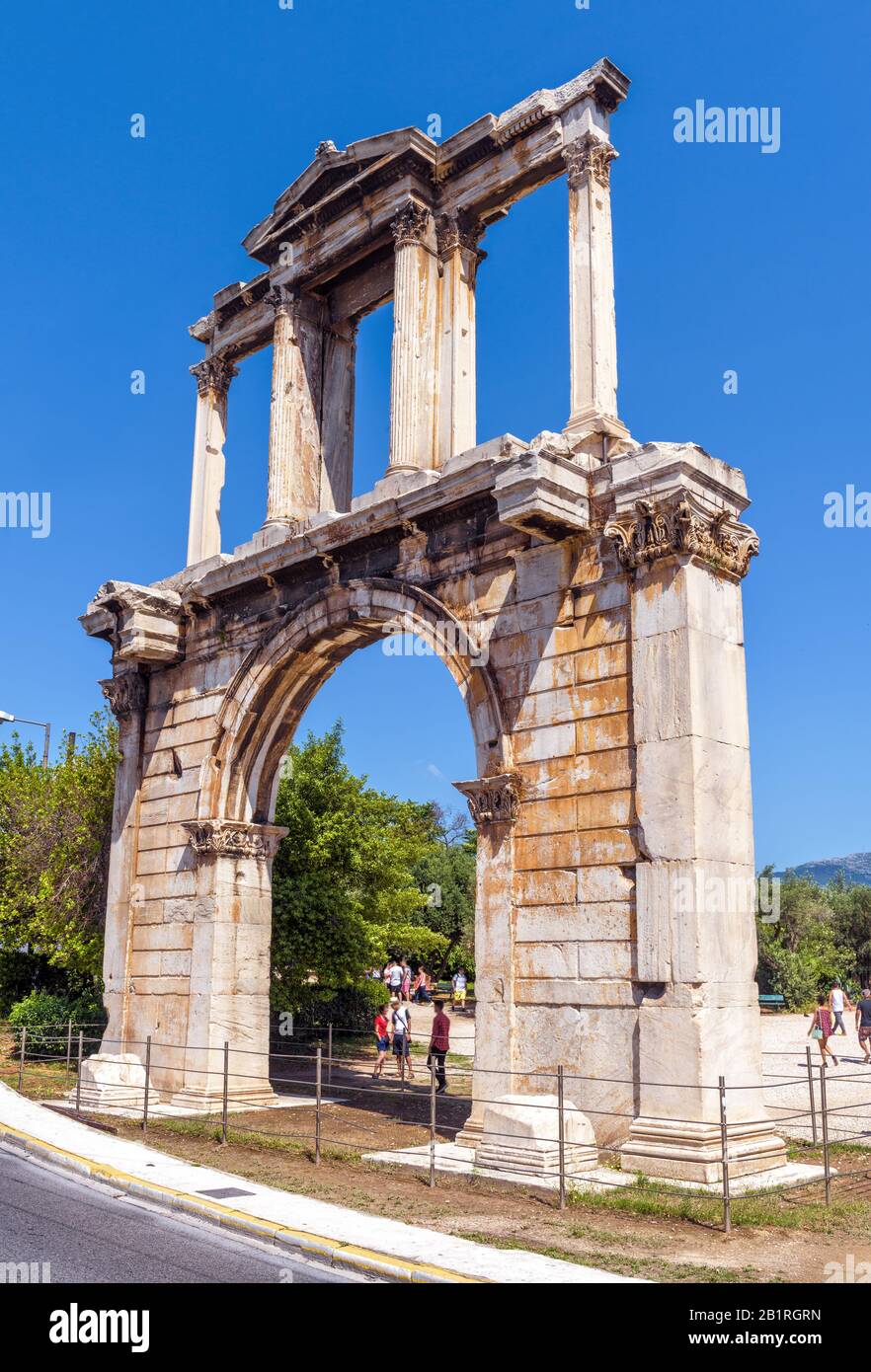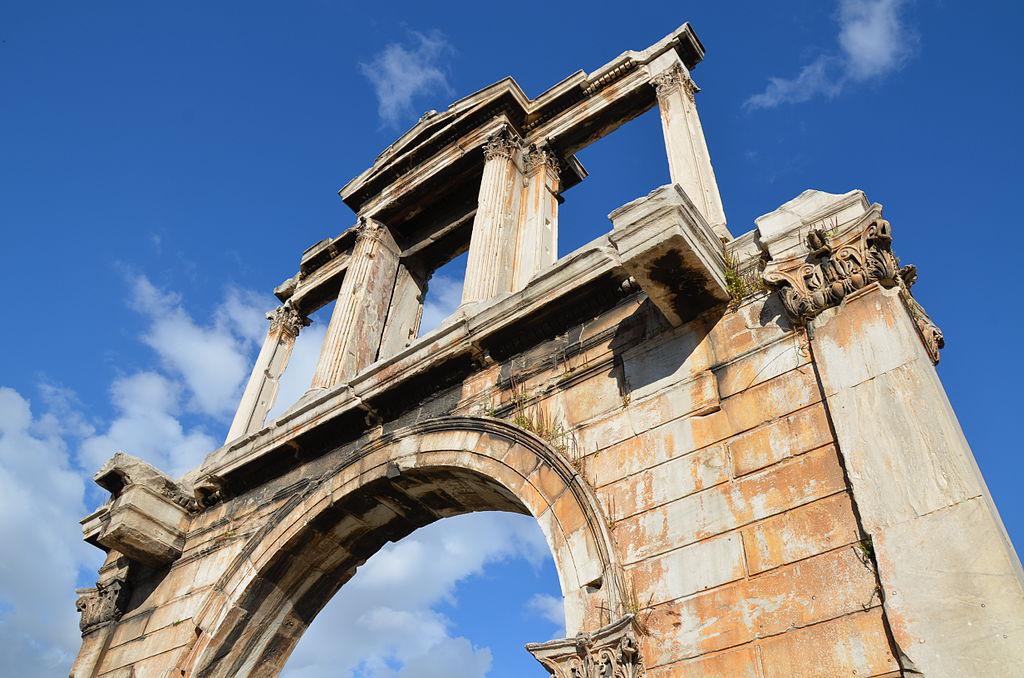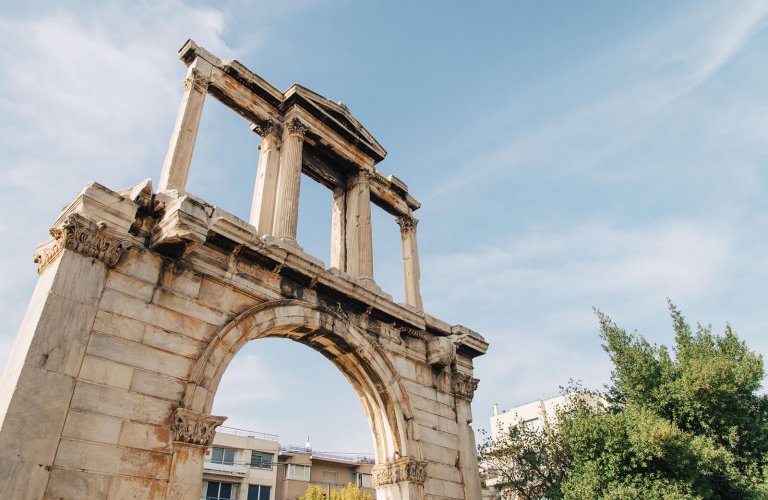Hadrian's Arch Athens: History & Roman Legacy

Introduction
Historical significance of Hadrian's Arch in Athens
As you stand in front of Hadrian's Arch in Athens, you can't help but feel a sense of awe and wonder at the ancient architecture that has withstood the test of time. The arch, built in 131 AD, serves as a grand entrance to the ancient city and symbolizes the power and influence of the Roman Empire.
You will be amazed by the intricate details and the sheer size of the arch, marvelling at the craftsmanship of the builders who created this magnificent structure so many centuries ago.
Comparison between Hadrian's Arch and other Roman monuments
| Aspect | Hadrian's Arch | Colosseum |
|---|---|---|
| Purpose | Grand entrance to the city | Amphitheater for entertainment |
| Size | Impressive archway | Massive arena seating 50,000 |
| Construction | Marble | Concrete and stone |
| Architectural Details | Intricate carvings | Arches and columns |
Looking at Hadrian's Arch alongside other Roman monuments like the Colosseum, you can see the unique purpose and design of each structure. While the Colosseum was a place for entertainment and gladiator battles, Hadrian's Arch served as a monumental gateway that welcomed visitors into the city with its grandeur and elegance. The arch's marble construction and intricate carvings set it apart from the massive concrete and stone structure of the Colosseum.
Significance of Hadrian's Arch in modern times
In modern times, Hadrian's Arch continues to be a symbol of ancient grandeur and architectural excellence. As you gaze upon the arch standing tall in Athens, you are reminded of the enduring legacy of the Roman Empire and the skill and ingenuity of those who built such remarkable structures. The arch serves as a link to the past, connecting us to a time when craftsmanship and design were revered.
Origin and Construction
Context and timeline of Hadrian's Arch construction in Athens
Standing in front of Hadrian's Arch in Athens, you feel a sense of connection to the rich history of the Roman Empire. Built-in 131 AD during the reign of Emperor Hadrian, the arch served as a grand entrance to the city, welcoming travellers and showcasing the power and influence of Rome.
As you marvel at this ancient structure, you are transported back to when the arch was a symbol of strength and authority.
Architectural features and design of Hadrian's Arch
Looking at Hadrian's Arch, you are struck by its intricate carvings and the grandeur of its marble construction. The arch stands as a testament to the skill and craftsmanship of the builders who created it centuries ago. The detailed designs on the arch tell stories of ancient myths and legends, adding a layer of artistic beauty to its impressive size and structure.
Emperor Hadrian's Influence
Emperor Hadrian's connection to the arch and Athens
Emperor Hadrian's vision and legacy are intricately linked to constructing the Grand Hadrian's Arch in Athens. As a ruler known for his passion for architecture and cultural patronage, Hadrian left a lasting mark on the Roman Empire's landscape.
The arch in Athens served as a symbol of his power and a testament to his admiration for Greek culture, blending Roman influence with the region's artistic traditions.
Symbolism and purpose of Hadrian's Arch in Roman times
Hadrian's Arch was more than just a monumental structure; it symbolized the Roman Empire's reach and dominance. Serving as a grand entrance to the city, the arch welcomed visitors with a display of Roman authority and prosperity. Its intricate carvings and architectural design conveyed a message of strength and stability, reflecting the empire's perceived ideals of order and grandeur.
Through the arch, Hadrian aimed to solidify Rome's presence in Athens and showcase the Empire's architectural prowess and artistic sophistication.
Hadrian's Arch in Modern Times
Preservation efforts and restoration projects of Hadrian's Arch
In modern times, Hadrian's Arch in Athens is a testament to the enduring legacy of Emperor Hadrian's architectural vision. The iconic structure has been a focal point of preservation efforts and restoration projects to maintain its historical significance.
Conservation initiatives have been implemented to ensure the arch's structural integrity and safeguard it for future generations. Through meticulous restoration work, experts have strived to protect the intricate carvings and architectural details that embody the arch's rich history.
Impact of tourism on Hadrian's Arch and surrounding area
The presence of Hadrian's Arch continues to attract tourists from around the world, drawn to its historical allure and architectural grandeur. The influx of visitors has bolstered the local economy and brought increased attention to the surrounding area.
As a popular tourist destination, the arch serves as a cultural landmark that provides insight into the ancient Roman Empire's influence in Athens. The tourism industry has significantly promoted awareness of Hadrian's Arch and fostered appreciation for its historical and artistic significance.

Local Legends and Myths
Folklore and myths surrounding the construction of Hadrian's Arch
As you explore the history of Hadrian's Arch, you may encounter various folklore and myths surrounding its construction. One popular legend suggests that Emperor Hadrian himself supervised the arch's building, ensuring every detail reflected his grand vision. Stories also speak of mythical creatures aiding in the construction, adding an air of mystery to the arch's origin.
Local legends related to Emperor Hadrian and the arch
Immerse yourself in the local legends tied to Emperor Hadrian and his connection to the arch. Tales of his benevolence and architectural prowess abound, depicting him as a revered figure in the region's history. Some stories attribute supernatural powers to Hadrian, claiming that his spirit watches over the arch and protects it from harm.

Historical Significance
Political and cultural importance of Hadrian's Arch in ancient Rome
As you delve deeper into the historical significance of Hadrian's Arch, you will uncover its profound impact on the political and cultural landscape of ancient Rome. The arch served not only as a monumental structure but also as a symbol of Emperor Hadrian's influence and authority.
Its grandeur and strategic location made it a focal point for important ceremonies and processions, solidifying Hadrian's place in Roman history as a powerful ruler dedicated to enhancing the city's magnificence.
Influence of Roman architecture on Greek culture
Explore the intriguing relationship between Roman architecture and Greek culture through the lens of Hadrian's Arch. The fusion of Roman engineering prowess with Greek artistic elements in the arch's design exemplifies the cultural exchange and mutual influence between the two civilizations.
Greek artisans and architects contributed their expertise to the construction, blending traditional Greek styles with Roman innovations to create a masterpiece that inspires awe and admiration today.
Legacy of Hadrian's Arch
Long-lasting impact of Hadrian's Arch on architectural styles
Hadrian's Arch is a testament to Roman architectural styles' enduring influence on subsequent civilizations. Its innovative design, characterized by the integration of elements from both Roman and Greek traditions, set a new standard for monumental structures. The intricate carvings and symmetrical proportions of the arch served as a model for future architects, inspiring the development of diverse architectural styles across different regions.
From the imposing monuments of the Byzantine Empire to the intricate facades of Renaissance palaces, the legacy of Hadrian's Arch continues to shape architectural aesthetics to this day.
Reflection of Roman legacy in modern Greek architecture
The presence of Hadrian's Arch not only celebrates the architectural prowess of ancient Rome but also symbolizes the enduring cultural ties between Rome and Greece. In modern Greek architecture, echoes of Roman influence can be seen in arches, columns, and geometric patterns reminiscent of Roman engineering and design principles. Incorporating Roman elements into contemporary Greek structures pays homage to the shared history and architectural innovations that emerged from the dynamic cultural exchange between these ancient civilizations.
As visitors marvel at Hadrian's Arch today, they are reminded of the lasting impact of Roman legacy on the architectural landscape of Greece.

Iconic Landmark and Tourist Attraction
Hadrian's Arch as a symbol of Athens and Greek history
Standing before Hadrian's Arch, you are captivated by its grandeur and historical significance. This timeless monument not only represents the architectural finesse of ancient Rome but also serves as a symbol of the enduring cultural connection between Rome and Greece.
The fusion of Roman and Greek elements in the design of the arch showcases the harmonious blend of two great civilizations, reminding visitors of the rich history and heritage that continues to shape modern-day Greece.
Tourist experiences and popular attractions near Hadrian's Arch
Exploring the area around Hadrian's Arch offers many tourist experiences and attractions that complement the historical charm of the monument. From strolling through the picturesque streets of Plaka, lined with traditional tavernas and charming boutiques, to visiting the ancient ruins of the Roman Agora nearby, every moment spent in this vibrant neighbourhood is a journey through time.
The vibrant atmosphere of Monastiraki Square, known for its bustling flea market and eclectic cafes, provides a perfect backdrop for immersing yourself in Athens's local culture and vibrant energy.
